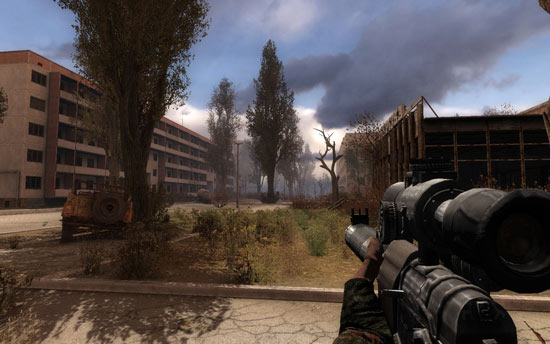AMD Phenom II X6 1090T and 1055T Six-Core Processor Review
S.T.A.L.K.E.R.: Call of Pripyat

The events of S.T.A.L.K.E.R.: Call of Pripyat unfold shortly after
the end of S.T.A.L.K.E.R.: Shadow of Chernobyl following the ending in
which Strelok destroys the C-Consciousness. Having discovered the open
path to the Zone’s center, the government decides to stage a large-scale
operation to take control of the Chernobyl nuclear plant.
S.T.A.L.K.E.R.: Call of Pripyat utilizes the XRAY 1.6 Engine,
allowing advanced modern graphical features through the use of DirectX
11 to be fully integrated; one outstanding feature being the inclusion
of real-time GPU tessellation. Regions and maps feature photo realistic
scenes of the region it is made to represent. There is also extensive support for older versions of DirectX, meaning that Call of Pripyat is
also compatible with older DirectX 8, 9, 10 and 10.1 graphics cards.

The game S.T.A.L.K.E.R.: CoP has no internal benchmarking tools built
into the game engine, but they do have a standalone benchmark available
that we used for our testing purposes. The screen capture above shows
the main window of the benchmark with our settings. Notice we are
running Enhanced Full Dynamic Lighting “DX10” as our renderer.

Results: With the game running enhanced full dynamic lighting (DX10) we found that the higher clocked quad-core processors were faster than all of the six-core processors from each respective brand. Not what you’d expect, but it goes to show you that not all games take advantage of more than quad-core processors.

Looking for a way to explain this, we turned to task manager and found that S.T.A.L.K.E.R.: Call of Pripyat isn’t threaded too well. In fact we only saw signs of life in four of the 12 threads with the majority being loaded up in one thread on CPU0. This explains why the quad-cores take the lead in this benchmark!

Comments are closed.